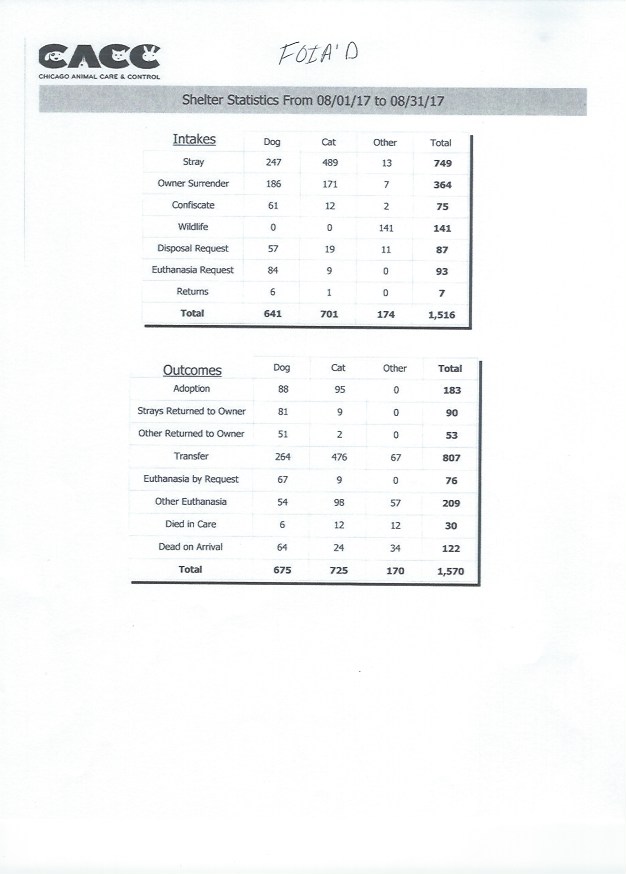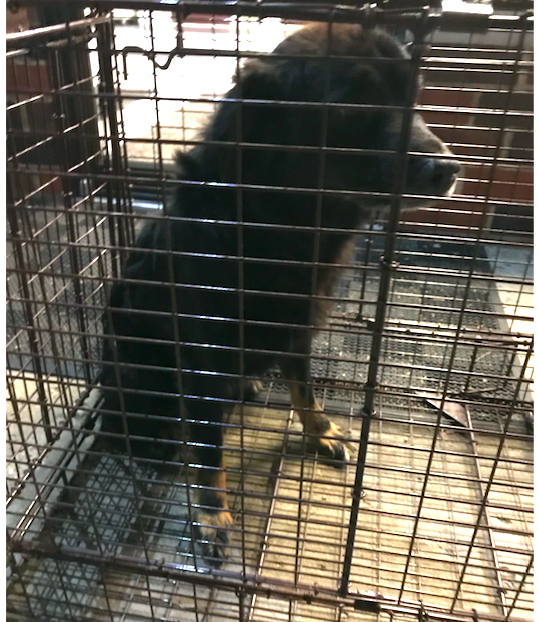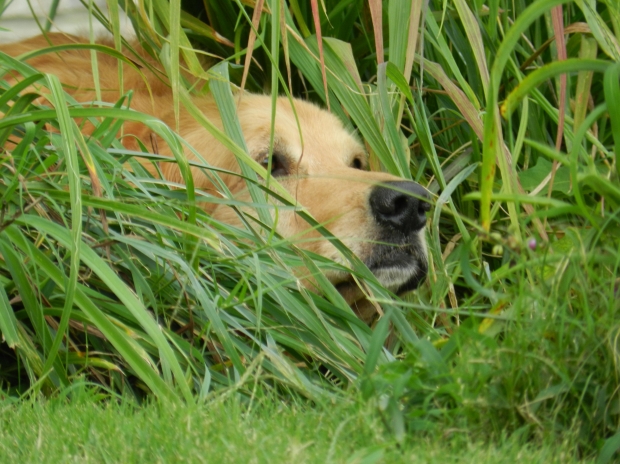I had been under the understanding that Chicago Animal Care and Control Return to Owner actually meant “stray” return to owner. Little did not I know it included other categories which CACC considered return to owner.
This is my statement to the Commission members of Chicago Animal Care and Control on July 19th.
My name is Susan Taney, Director of Lost Dogs Illinois. Lost Dogs Illinois is a not for profit organization that helps citizens find their lost dogs and Good Samaritans find lost dog’s owners but we also work with Animal Controls to increase their Return to Owner rate and decrease their stray intake.. We have typically defined Return to Owner as the percentage of stray or lost dogs who are brought in to CACC which are reunited with their owners.
I would first like to address the return to owner statistics. I’ll refer to it as RTO from here on in. This year on CACC’s website I noticed that in the month of March the RTO statistics were split into categories: strays that were reunited with their owner and other dogs that were returned to their owner for other reasons. (to give you examples: dogs surrendered and the owner changed their mind or evictions or owner went to hospital so these were “return to owner” ). In all the discussions we had with CACC we assumed we were on the save wavelength and only referring to the strays that were reunited with their owners. Also, I noticed that there was a whole new description about the live release rate and other definitions in regards to statistics. With that in mind, the RTO statistics that I have reported to both CACC and the public have been wrong and are not as positive as I thought they were. Never was there any indication with discussions with any of the directors and staff that RTO included not only strays but the other categories I mentioned earlier, as well.
So I am going to now tell you the actual number of stray dogs reunited with their owners for three months in 2017 compared with what I wrote about on our website and Facebook page in which I gave praise to CACC for their stellar improvement.
June, 2017 45% actual 33%
July, 2017 42% actual 31%
August 2017 53% actual 33%
I am very disappointed and disheartened about this discovery in regards to the statistics.
Stray intake has been consistently been at 60%. Progressive animal controls are taking a hard look at stray intake on how to decrease it. At the last commission meeting I attended, I made suggestions.
I don’t know who the new Director will be but I am truly hoping the new Director will try to fix the broken animal control system in Chicago with being a leader in the field which will expand to Cook County.Obviously the Live Release Rate has increased but the actual animal control system needs to be addressed, supported by the mayor and public and brought into the 21stcentury.
Thank you for your time.
Below listed are the actual statistic posted on the CACC’s website.



Below are the actual statistics that I FOIA’d. What is FOIA? The Freedom of Information Act (FOIA) is a United States federal law that grants the public access to information possessed by government agencies. Upon written request, U.S. government agencies are required to release information unless it falls under one of nine exemptions listed in the Act. As a citizen you have the right to request information possessed by government agencies.



 Ebony is a rescue dog with Placing Paws Rescue, where I am a volunteer. She was adopted out and escaped from her new owners house less than a week after being adopted. I live close by, and as soon as she went missing me and other Placing Paws volunteers were out. We put up flyers like crazy, fielded sightings, walked for miles talking to people, feeding stations were set up with cameras.
Ebony is a rescue dog with Placing Paws Rescue, where I am a volunteer. She was adopted out and escaped from her new owners house less than a week after being adopted. I live close by, and as soon as she went missing me and other Placing Paws volunteers were out. We put up flyers like crazy, fielded sightings, walked for miles talking to people, feeding stations were set up with cameras.






